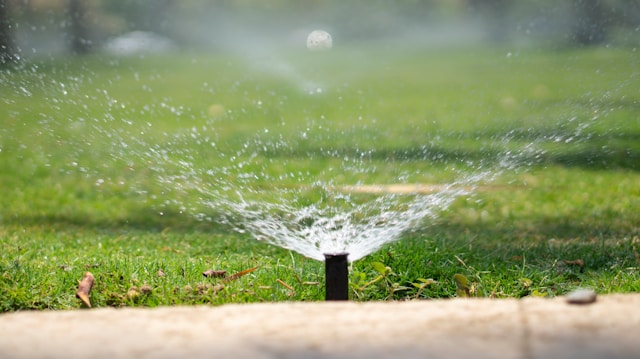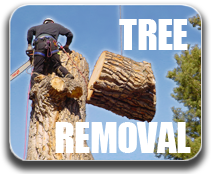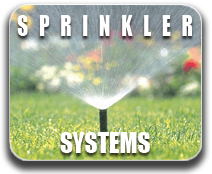How Proper Sprinkler Installation Keeps Your Arizona Landscape Thriving
October 13, 2025Keeping a healthy, vibrant landscape in Arizona’s hot, dry climate is no small task. With scorching summers, minimal rainfall, and clay-heavy soil, many homeowners find it difficult to maintain lush, green lawns and thriving plants. Fortunately, the key to success lies in one essential element: a well-designed sprinkler system.

At All Valley Landscaping, we’ve seen firsthand how proper sprinkler installation transforms struggling yards into flourishing outdoor spaces. Whether it’s a compact lawn in Glendale, a desert-style landscape in Scottsdale, or a large property in Paradise Valley, the right irrigation system ensures efficient water use, lower bills, and healthy growth year-round.
This article explores how sprinkler systems work, why professional installation matters, how to choose the right components, and what maintenance steps help protect your investment.
1. The Role of Sprinklers in Arizona Landscapes
Arizona landscapes face extreme challenges due to intense sunlight, low humidity, and erratic rainfall. Lawns and plants often depend entirely on irrigation to survive. A sprinkler system’s role isn’t just to “water the yard”—it’s about delivering precise hydration to each plant zone based on soil, slope, and plant type.
Without efficient irrigation, water evaporates before reaching roots, or it pools in uneven spots, wasting resources and harming plant health. Sprinklers help homeowners strike a balance between water conservation and landscape vitality.
Common Challenges Without a Sprinkler System
- Uneven watering: Hand watering or hoses often miss key zones.
- Water waste: Overwatering can cause runoff or puddling.
- Dry patches: Underwatered areas suffer quickly under Arizona’s sun.
- Soil erosion: Inconsistent watering can wash away topsoil.
- Higher bills: Manual methods waste more water and time.
Properly installed sprinklers solve these issues by distributing water evenly and automatically—protecting both your landscape and your wallet.
2. Why Professional Sprinkler Installation Matters
Many homeowners are tempted to install their own sprinkler systems, especially with DIY kits available at hardware stores. However, Arizona’s conditions require expert planning and technical precision that goes beyond connecting hoses and sprinklers.
Professional installers like All Valley Landscaping consider factors that dramatically impact long-term results, such as:
- Water pressure and flow rate: Ensures consistent performance across all zones.
- Sun exposure and plant type: Determines spray head types and watering schedules.
- Soil type and drainage: Prevents pooling and root rot.
- Zoning and design: Divides areas into logical watering zones for better efficiency.
A poorly installed system can lead to leaks, wasted water, dead spots, or property damage. A properly installed one delivers lasting results with minimal upkeep.
3. Sprinkler System Components and Their Functions
Every sprinkler system includes several vital components that must work together harmoniously. Understanding each helps you appreciate the value of proper installation and maintenance.
| Component | Function | Why It Matters in Arizona |
|---|---|---|
| Controller (Timer) | Automates watering schedules. | Reduces water waste by adjusting for climate and season. |
| Valves | Regulate water flow to different zones. | Prevents overwatering and allows targeted irrigation. |
| Sprinkler Heads | Disperse water in controlled patterns. | Must match area size and plant type to avoid runoff. |
| Pipes | Transport water underground. | Must withstand high temperatures and pressure changes. |
| Backflow Preventer | Stops contamination of drinking water. | Required by Arizona law to protect municipal systems. |
| Sensors (Rain/Moisture) | Detect conditions to pause watering. | Saves water during rain or high humidity. |
When these parts are chosen and installed correctly, they create an efficient network that provides optimal coverage and water savings.
4. Choosing the Right Sprinkler System for Arizona Homes
Not all sprinkler systems are created equal—different landscapes demand different irrigation styles. Selecting the right system depends on property layout, plant types, soil, and climate.
Here are the most common types used in Arizona landscapes:
A. Spray Irrigation
This system uses fixed or rotating spray heads to cover turf areas evenly. It’s ideal for smaller lawns or uniform spaces but can lead to overspray if not carefully designed. High-quality nozzles and pressure regulators minimize evaporation.
B. Rotor Systems
Rotary sprinklers deliver water in a slow, steady stream over a large area. They’re perfect for medium to large lawns in neighborhoods like Peoria or Paradise Valley, where larger yards are common. Their slower rotation helps prevent water loss from wind and heat.
C. Drip Irrigation
Drip systems deliver water directly to plant roots through emitters or tubing. They are extremely efficient for desert plants, shrubs, and gardens—especially for xeriscaping projects common in Phoenix. They minimize evaporation and runoff, conserving water while keeping soil consistently moist.
D. Smart Irrigation Systems
Modern systems feature Wi-Fi-enabled controllers that use weather data and sensors to adjust watering automatically. These systems detect rainfall, humidity, and temperature, providing the most precise water management available.
Each system can be customized, and many properties benefit from a hybrid setup—using spray systems for lawns and drip irrigation for plants.
5. The Importance of Water Efficiency
Water conservation is a top priority in Arizona, where drought conditions are frequent and water restrictions can occur. Efficient sprinkler systems play a crucial role in sustainable landscape care.
A properly designed irrigation setup can reduce water usage by up to 50% compared to manual watering. The secret lies in zoning, scheduling, and smart technology.
Ways Sprinklers Improve Efficiency
- Automatic timers prevent overwatering.
- Pressure regulation avoids misting and evaporation.
- Drip emitters minimize waste for targeted areas.
- Rain and soil sensors halt watering when unnecessary.
- Even coverage eliminates puddling and dry zones.
By balancing plant needs with environmental responsibility, you keep your yard healthy and conserve resources at the same time.
6. How Sprinkler Installation Supports Landscape Health
Proper watering supports every part of your landscape’s ecosystem—from grass to trees to soil microorganisms. Consistent hydration encourages deep root growth, which leads to stronger, drought-tolerant plants.
Healthy Lawns
A balanced watering schedule prevents shallow roots and turf disease. With reliable sprinklers, lawns stay green even through Arizona’s toughest months.
Thriving Trees and Shrubs
Trees need slow, deep watering to reach their roots several feet below the surface. Zone-specific sprinklers or drip emitters can deliver that effectively without wasting water.
Vibrant Flowers and Plants
Consistent moisture allows flowering plants to bloom longer and resist heat stress. Proper irrigation spacing avoids fungal growth or leaf burn.
Improved Soil Health
Even moisture helps preserve organic matter and prevents compaction. This, in turn, supports better aeration and nutrient uptake.
In short, your sprinkler system is the foundation of your yard’s health—keeping everything alive and beautiful through every season.
7. The Installation Process: What Homeowners Can Expect
At All Valley Landscaping, sprinkler installation follows a detailed, step-by-step process to ensure precision and reliability. Homeowners can expect clear communication and complete transparency from the initial assessment through the final walkthrough.
Step 1: Consultation and Design
A technician evaluates your yard, soil type, and plant zones. The design plan considers water flow, elevation, and sunlight patterns to ensure every inch of your property receives the right amount of water.
Step 2: Component Selection
Based on your property and budget, our team selects durable sprinkler heads, valves, and controllers suited to Arizona’s desert climate.
Step 3: System Layout and Trenching
Technicians mark zones and dig trenches for piping. They install lines with proper slope and depth to avoid damage from heat or shifting soil.
Step 4: Installation and Connection
Pipes, valves, heads, and the controller are installed and connected. Each zone is tested for leaks, pressure, and coverage.
Step 5: Calibration and Final Testing
The system is programmed for optimal watering times and durations. Adjustments ensure full coverage without overspray.
Step 6: Homeowner Education
Before leaving, our team explains how to operate, program, and maintain your new system. We also discuss seasonal adjustments to keep performance high.
This structured approach guarantees a reliable, efficient sprinkler system that supports your landscape for years to come.
8. Maintenance Tips for Long-Term Performance
Even the best sprinkler systems need routine care. Arizona’s heat, dust, and hard water can wear down components over time. Simple maintenance steps extend system life and prevent costly repairs.
Monthly Checks
- Inspect for leaks or broken heads.
- Clear debris around spray heads.
- Verify that no zones are oversaturating.
Seasonal Adjustments
- Reprogram timers based on season and rainfall.
- Flush lines at the start of summer to remove buildup.
- Inspect backflow preventers for safety compliance.
Annual Service
Hire professionals for a yearly tune-up. They’ll check valves, replace worn seals, clean filters, and recalibrate heads for even coverage.
By investing in regular care, homeowners protect their landscape and avoid unnecessary water waste.
9. Common Sprinkler Problems (and Their Solutions)
Homeowners occasionally notice issues like weak spray patterns, puddles, or dry patches. Many of these problems stem from simple causes that can be quickly resolved.
| Problem | Possible Cause | Solution |
|---|---|---|
| Low water pressure | Clogged nozzle or valve | Clean or replace nozzle, check for leaks |
| Uneven watering | Tilted or blocked heads | Realign heads, remove obstacles |
| Overspray | Wrong nozzle type | Replace with appropriate head size |
| Leaks around valves | Worn seal or loose connection | Tighten or replace seal |
| Controller not working | Electrical fault or timer issue | Reset or replace controller |
Professional technicians can diagnose and fix these problems quickly—restoring your system to peak efficiency.
10. The All Valley Landscaping Advantage
Choosing All Valley Landscaping means choosing experience, integrity, and craftsmanship. As a trusted Phoenix-based landscaping company serving Scottsdale, Paradise Valley, Glendale, and Peoria, we specialize in sprinkler installation, irrigation repair, and complete landscape design.
We don’t just install systems—we ensure they’re tailored to your property’s unique needs. Our genuine, personalized service ensures each project exceeds expectations, from consultation to completion. Whether you need a new installation or a system upgrade, our team is ready to create a lasting solution that keeps your yard thriving.
Conclusion
In Arizona’s demanding climate, water efficiency and proper irrigation design are essential. Sprinklers, when installed correctly, offer precision, consistency, and sustainability—all while saving time and money.
From smart controllers that adjust to the weather, to carefully zoned drip systems that nurture native plants, the right sprinkler setup turns a dry yard into a lush, vibrant landscape.
All Valley Landscaping takes pride in helping homeowners achieve exactly that—healthy, beautiful outdoor spaces that endure the desert sun and make every drop of water count.








